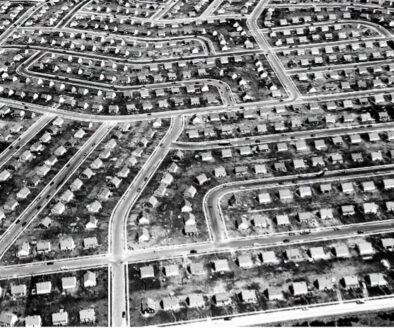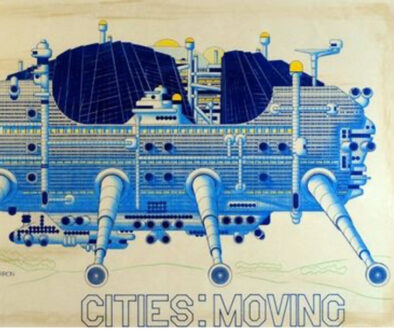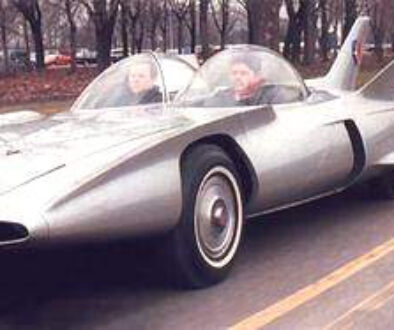Barn Doors, Department Stores, Kiddie Monorails and Urban Transit Systems

Some time ago, I was at a friend’s office and noticed a photograph on his desk. It almost seemed like something ‘photoshopped’ – it showed a bright, shiny metal tube with children, buzzing overtop the sales aisles of a department store. It was real – the photo was an image of the late 1940’s of the kiddie monorail installation at the Sears & Roebuck store located in the former Second Lieter Building at the corner of State and Congress in Chicago.

Sears moved out of this building years ago. Trying to keep a building this size full of the sorts of merchandise sold by Sears at that time was an awful lot of inventory. There’s only so many Craftsman Tool products one can sell – to a market that’s a bunch of office workers, no less. When I first landed in Chicago, there was an occasion when I was walking south from the Loop to retrieve my parked car when suddenly Congress closed up with security vehicles and there came the Clinton’s Presidential motorcade, Hillary Clinton on the side of the car facing the old Sears store which made me wonder how many times she – in her Chicago youth – passed that corner before, not realizing that she would ever pass by again waving to crowds as the First Lady. Moreover, the old Sears Store – the Second Lieter Building – was a watershed commission for the architectural firm of Jenney and Mundie. It was a mammoth skyscraper cage building capable of accommodating many different uses; it came with a beautiful pattern of window openings. Chicago is a city where, in the Loop, the ground floors of buildings always have corridors going in and out; the buildings are a permeable extension of the streets. The former Second Lieter Building – or former Sears Store – or whatever one called it was a handy short cut for me on days of inclement weather. I never imagined it to have something like this kiddie monorail suspended overhead.

The Louden Machinery Company of Fairfield, Iowa was a late 19th century leader in the invention and manufacture of farm equipment. A hay bale stacking machine was one of the company’s first patents; one can still find plan books that describe standard “Louden” barn configurations. One of their inventions was for a sliding barn door assembly. Looking at this particular invention in abstract terms: it allowed a heavy object to be suspended off of rollers that glided on a rail… use a bit of imagination, a couple machinery parts and something capable of accommodating people and voila! – one has a type of overhead monorail system that can convey passengers.

After the Second World War, the Louden Company put all of these together and started manufacturing a child sized “kiddie monorail” that was snapped up by large, urban department stores to be a prominent feature in their toy department. Kind of like a toy train one could ride. Apparently, there were more than two dozen kiddie monorails installed. Asides from installation at Sears in Chicago, I know of others at the Kresge store in Newark, NJ; at Wanamakers in Philadelphia, PA; Herpolsheimers in Grand Rapids, Michigan; at the Midtown Plaza in Rochester, NY; and at the Meier and Frank Store in Portland, Oregon; this latter example being the last installation to operate. They must have been absolutely thrilling!
It reminds me of the Alweg Company building the Monorail for the 1962 World’s Fair in Seattle. Operated for a profit, sold at minimal cost to the City after the Fair, it presented a concept of moving people around at a minimal cost. Why can’t we do this nowadays?



